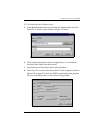
Chapter 9. Diagnostics and Troubleshooting
Transport® Model PT878 Portable Liquid Flowmeter User’s Manual 209
9.3.2 Pipe Problems
Improper pipe conditions and/or flowcell installation can cause problems
with fluid flow measurement. Check the items below if you suspect this
class of problem. Contact the factory for unsolved pipe-related problems.
1. THE INSIDE OF THE PIPE OR FLOWCELL MUST BE
RELATIVELY CLEAN. Excessive build up of scale, rust, or debris will
interfere with flow measurement. Generally, a thin coating or a solid
well-adhered buildup on the pipe wall will not cause problems. Loose
scale and thick coatings (such as tar or oil) will interfere with
ultrasound transmission and may result in incorrect or unreliable
measurements.
2. THE FLOWCELL ORIENTATION MUST NOT ALLOW
SEDIMENT OR GAS ENTRAPMENT AT THE TRANSDUCER
LOCATIONS. Sediment or gas trapped in the transducer ports for
wetted transducers, or at the transducer locations for clamp-on
transducers, will interfere with flow measurement. Realignment of the
flowcell or transducers often cures these problems. In some cases
different transducers may be used that protrude into the flow stream.
3. THE PIPE OR FLOWCELL DIMENSIONS MUST BE ACCURATE.
The accuracy of your flow measurements will be no better than the
accuracy of your programmed pipe or flowcell dimensions. If GE did
not supply your flow cell, the dimensions you program must be
consistent with the required flow accuracy. Check your pipe for wall
thickness, diameter, dents, eccentricity, weld deformity, and
straightness.
4. THE PIPE SURFACES SHOULD BE SMOOTH (FOR CLAMP-ON).
When using clamp-on transducers, both the inside and the outside of the
pipe at the transducer locations must be smooth. If the pipe is extremely
rough, the ultrasonic signal will be scattered by the rough surface, and
will not be received by the flowmeter, preventing flow measurement.
5. THE PIPE MUST ALLOW ULTRASOUND TO PASS THROUGH
(FOR CLAMP-ON). Some pipe materials or linings such as Fiberglass
(or generic fiber reinforced pipe), Teflon, and polyethylene, absorb
ultrasound and may cause problems in clamp-on applications. Pipes
with extremely thick walls or high OD to ID ratios may also present
difficulties.


















